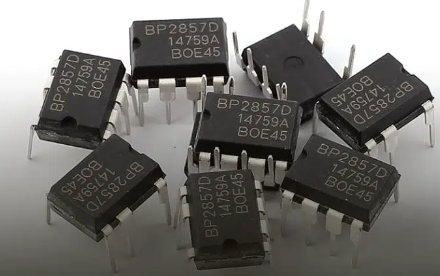- Ameya360 elektronische Komponenten Kauf Website >
- Industrie-Nachrichten >
- What are the different types of photocoupler? What is the function of a photocoupler?
What are the different types of photocoupler? What is the function of a photocoupler?
What is the definition of a photocoupler?A photocoupler, also known as an optocoupler, is an electronic component used to transfer electrical signals between two isolated circuits using light. It comprises a light-emitting diode (LED) that emits light when current passes through it and a photosensitive semiconductor device (like a photodiode or phototransistor) that detects this light and converts it back into an electrical signal.

The key purpose of a photocoupler is to provide electrical isolation between two parts of an electronic system. This isolation prevents high voltages, noise, or potential differences in one circuit from affecting or damaging another circuit. It’s commonly used in applications where safety, signal integrity, and noise reduction between different parts of a circuit are critical. For instance, they’re used in power supplies, communication systems, and in controlling high-voltage devices from low-voltage control circuits.
What are the different types of photocoupler?
Photocouplers, or optocouplers, come in various types, each designed for specific applications and operating conditions. Here are some common types:
Photodiode Couplers: These use a photodiode to detect light emitted by an LED. They are primarily used for simple applications requiring basic isolation.
Phototransistor Couplers: Instead of a photodiode, these use a phototransistor to detect light. They provide higher sensitivity and better amplification, making them suitable for applications where higher isolation or signal amplification is required.
Photovoltaic Couplers: These optocouplers generate voltage directly when exposed to light, eliminating the need for a separate power supply. They offer fast response times and are used in high-speed applications.
Solid-State Relays (SSRs): Combining optocouplers with a semiconductor switch, SSRs use an optocoupler to isolate the control and load circuits in relay-based applications. They offer advantages like fast switching speed and long lifespan compared to mechanical relays.
High-Speed Optocouplers: Specifically designed for high-speed data transmission, these optocouplers offer increased bandwidth and faster response times, suitable for applications like fiber optic communication systems and data transmission.
Gate Drive Optocouplers: These are used in driving power semiconductor devices like MOSFETs or IGBTs, providing electrical isolation between the control and power circuits. They ensure accurate switching and prevent electrical noise from affecting the control circuit.
Each type of photocoupler has its advantages and is chosen based on factors like speed, isolation requirements, power consumption, and the specific application’s needs.
What is the function of a photocoupler?A photocoupler, also known as an optocoupler, serves the essential function of providing electrical isolation between two separate circuits while allowing information or signals to pass between them via light. It consists of an LED (Light Emitting Diode) that emits light and a photosensitive component, like a photodiode or a phototransistor, that detects this light.
The primary functions of a photocoupler include:
Electrical Isolation: It prevents direct electrical contact between two circuits that might operate at different potentials or have different ground references. This isolation protects sensitive components from voltage surges, noise, or faults in one circuit from affecting the other.
Signal Transfer: The light emitted by the LED in one section is detected by the photosensitive component in another section. This enables the transfer of signals, data, or control commands between isolated circuits without the need for direct electrical connections.
Noise Suppression: Photocouplers can effectively suppress electromagnetic interference (EMI) or electrical noise that could otherwise disrupt signals passing between circuits.
Voltage Level Shifting: In some cases, photocouplers can help in shifting voltage levels between different parts of a circuit, allowing compatibility between systems with varying voltage requirements.
Switching and Control: They are also used to control power devices such as transistors or relays by isolating the control circuit from the high-power or high-voltage circuit. This ensures safety and prevents damage to sensitive control components.
Overall, photocouplers play a crucial role in ensuring safety, reliability, and proper operation in various electronic systems by enabling communication and control between different sections while keeping them electrically isolated.
What’s the application of photocoupler?Photocouplers, or optocouplers, find applications across various industries and electronic devices due to their ability to provide electrical isolation while transmitting signals optically. Some common applications include:
Switching Power Supplies: Used for feedback control, error detection, and voltage regulation in power supplies, ensuring safety and stability by isolating high-voltage sections from low-voltage control circuits.
Industrial Control Systems: Employed in motor drives, PLCs (Programmable Logic Controllers), and robotics for signal isolation, noise reduction, and ensuring safety in high-voltage environments.
Telecommunication Equipment: Utilized in modems, routers, and other networking devices to isolate data lines, reduce noise, and protect against voltage surges.
Medical Devices: Found in various medical equipment like patient monitoring systems, infusion pumps, and defibrillators to isolate sensitive electronic components from potential electrical hazards.
Automotive Electronics: Used in automotive systems for isolating control signals in electric vehicles, hybrid vehicles, engine control units, and safety systems to ensure proper operation and safety.
Audio Equipment: Applied in audio amplifiers, mixers, and other audio devices to reduce noise and prevent ground loop issues.
Isolated Data Communication: Employed in isolated USB interfaces, isolated RS-232, RS-485, or CAN bus interfaces for secure data transmission in noisy environments.
Isolated Gate Drivers: Used in controlling power switches like MOSFETs or IGBTs in motor control, inverters, and high-power applications where galvanic isolation is necessary.
Signal Isolation in Control Circuits: Applied in control systems for isolation between microcontrollers and sensors, or in feedback loops for accurate signal transmission without interference.
Isolated Sensing Circuits: Utilized in isolation amplifiers or sensor interfaces to isolate and amplify sensor signals accurately without ground loops or noise interference.
Photocouplers play a critical role in ensuring safety, noise reduction, and reliable signal transmission in numerous electronic systems across various industries where electrical isolation is essential.
How does a photocoupler work?A photocoupler, also known as an optocoupler, functions by transmitting signals between two isolated circuits using light. It typically consists of an LED (light-emitting diode) and a photodetector, both encased in a light-proof package.
Here’s how it generally works:
• LED Emission: When an electrical signal is applied to the LED inside the package, it emits light. This light is used to transmit signals across the isolation barrier.
• Photodetector Reception: The emitted light reaches the photodetector, which converts the light signal back into an electrical signal. This photodetector can be a phototransistor, photodiode, or other light-sensitive semiconductor devices.
• Isolation Barrier: The physical barrier between the LED and the photodetector provides electrical isolation, preventing direct electrical contact between the input and output circuits. This isolation protects sensitive components in one circuit from potential issues in the other.
• Signal Transmission: The input circuit controls the LED, while the output circuit detects the light emitted by the LED. Any changes in the input signal controlling the LED are replicated in the output as variations in the received light signal.
By converting electrical signals into light and then back into electrical signals, photocouplers facilitate signal transmission between circuits while ensuring electrical isolation. This isolation protects sensitive components from high voltages, noise, and potential damage, making them valuable in various applications where safety and signal integrity are crucial.
What is the difference between transformer and optocoupler?Transformers and optocouplers serve different purposes and operate on different principles despite sharing some similarities in their function to transfer signals.
Transformer:
Principle: Transformers work based on electromagnetic induction. They consist of two coils wound around a common core. An alternating current in the primary coil induces a magnetic field in the core, which, in turn, induces a current in the secondary coil.
Isolation: Transformers provide electrical isolation by transferring power or signals magnetically. They’re used for voltage conversion, impedance matching, and signal isolation.
Applications: They are commonly used in power supplies, signal amplification, and impedance matching.
Optocoupler:
Principle: Optocouplers, also known as photocouplers, function by transferring signals through light. They consist of an LED and a photodetector, providing electrical isolation by transmitting signals optically.
Isolation: The primary purpose is to provide electrical isolation between input and output circuits. They’re used to control or transmit signals across isolated circuits while preventing electrical connections between them.
Applications: Commonly used in digital communication, switching power supplies, motor control, and interfacing microcontrollers.
Key Differences:
Principle of Operation: Transformers work on the principle of electromagnetic induction, while optocouplers function through light transmission.
Signal Transfer Method: Transformers transfer signals through magnetic coupling, while optocouplers transfer signals using light (photons).
Isolation: While both devices offer electrical isolation, transformers isolate through magnetic fields, and optocouplers provide isolation via light transmission.
Applications: Transformers are typically used for voltage conversion, power transfer, and impedance matching. Optocouplers are used for signal transmission, noise isolation, and circuit protection.
Online-Nachrichten-Anfrage
- Woche des heißen Materials
- Knappes Material: Seckilling
| Modell | Marke | Anfrage |
|---|---|---|
| BD71847AMWV-E2 | ROHM Semiconductor | |
| CDZVT2R20B | ROHM Semiconductor | |
| TL431ACLPR | Texas Instruments | |
| MC33074DR2G | onsemi | |
| RB751G-40T2R | ROHM Semiconductor |
| Modell | Marke | Zum Aufschnappen |
|---|---|---|
| IPZ40N04S5L4R8ATMA1 | Infineon Technologies | |
| TPS63050YFFR | Texas Instruments | |
| STM32F429IGT6 | STMicroelectronics | |
| ESR03EZPJ151 | ROHM Semiconductor | |
| BP3621 | ROHM Semiconductor | |
| BU33JA2MNVX-CTL | ROHM Semiconductor |
- Woche des Rankings
- Monatliche Rangliste
Qr-Code des offiziellen ameya360-Kontos
Identifizieren Sie den QR-Code, dem Sie folgen möchten


Please enter the verification code in the image below:






















